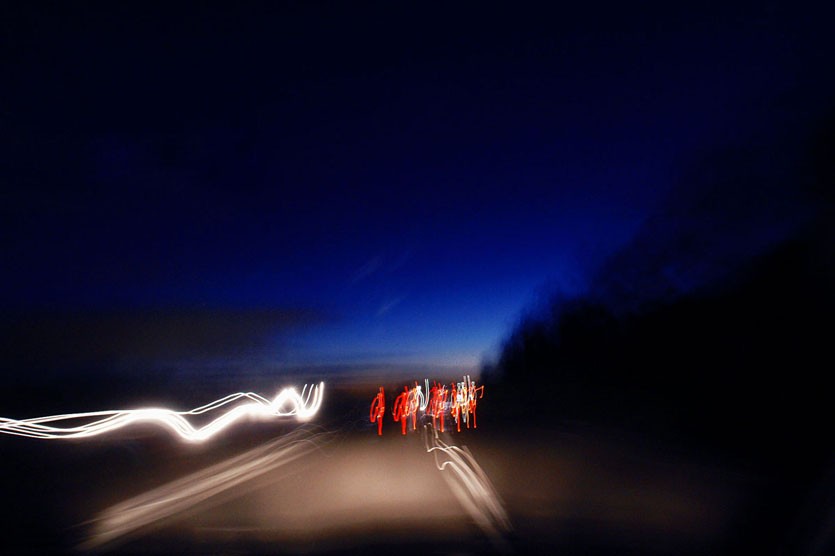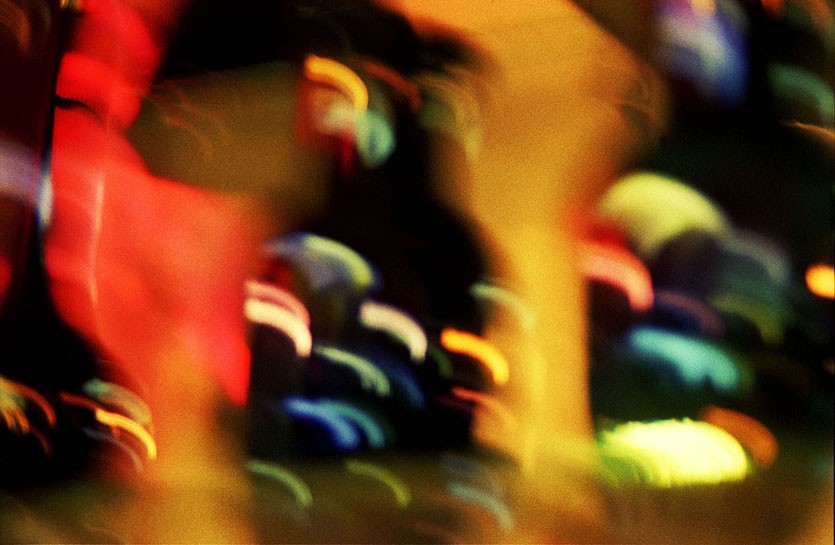Cities and Their Expressive Cracks
To see the city, to record its daily life, to feel its irritating pulse, to sense its unrelenting movement. When you see a city, you do not necessarily see truth. This is precisely the main idea that passes by Fernanda Chemale’s ElefanteCidadeSerpente [ElephantCitySerpent], where she took up the challenge of creating a photographic collection of cities today without committing to photographing buildings, avenues, people; in short, the socio-cultural history of urban spaces. Her images are icons of a walker’s purest momentary ephemeral sensation.
Fernanda decides to look at the city by photographing it in a speedy-zapping vision, allowing us, her readers, to be partially responsible for putting together her amazing kaleidoscopes. Her sharp perception, combined to a fantastic sense of fluid, plastic unity, allows heterogenic and discontinuous elements existing in contemporary metropolis to emerge as synthesis materializing her free expressive gesture.
Her image fragments are arranged in weird framings, forming casual geometries and illogical designs. Her images highlight distortions, juxtapositions, movements, colors, lights; everything as if in an indecisive game that does not always allow us to elucidate the mysteries of the visible world, despite being captured by the camera. In her facing of the cities, Fernanda intends to interrelate shapes, to open expressive cracks in a space busied by daily actions, to highlight lights and shadows involving the scene, to frame landscapes in rearview mirrors, to materialize the tensions present in everything visible composing spaces.
The edition of ElefanteCidadeSerpente, too, adopts the idea of serializing fragments in order to enhance the unity of the book. Fernanda embraces her images produced in movement (in part from a moving car) and, therefore, her photographic gesture is a performance, as we see subjective-strong images, almost immediately unidentifiable, which forces us to reflect upon what we see and to try to imagine this creative wish expanding to the visible world.
The city represents a large conglomerate of buildings, most of them solid and unchangeable; while a walking photographer must elucidate urban spaces as a slimy fluid feeding on the power of strange paths almost randomly traced by men. It is a kind of understanding of the city as a space that must be traversed and perceived through an artist’s essential curiosity. In this essay, especially, we can see photography captured at its own gesture of construction, a gesture that leaves its traces on the image’s materiality.
English painter Francis Bacon used to say, “To figure, instead of achieving, materialization through image torsions and deformities.” Fernanda Chemale created spots of light, color, and movement, with strange noises, juxtapositions, and distortions; bringing her glance closer to contemporary Brazilian photography’s active and innovative vision.
Rubens Fernandes Junior






